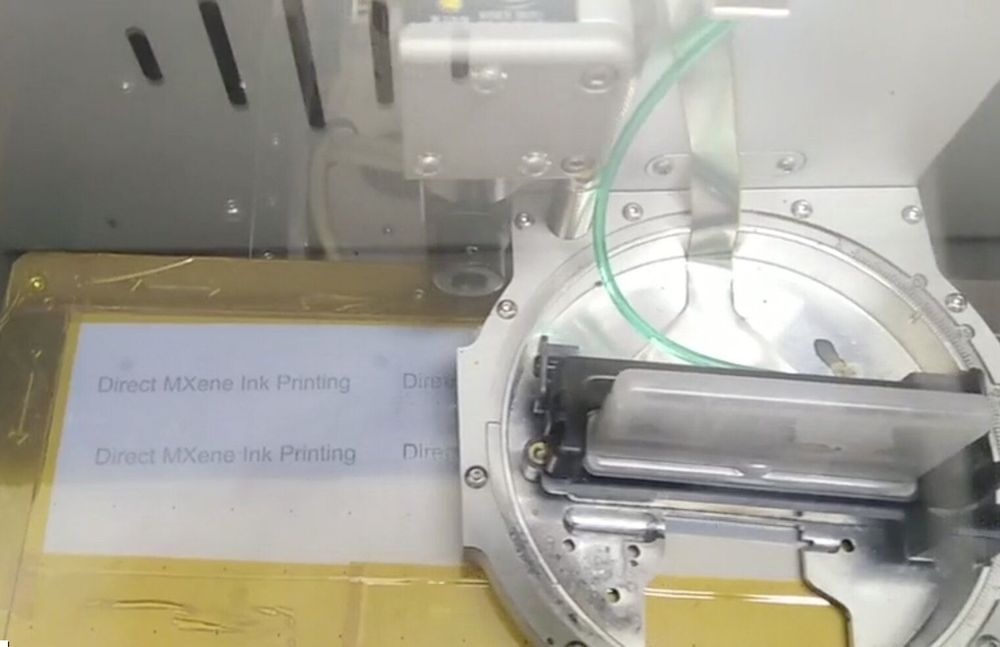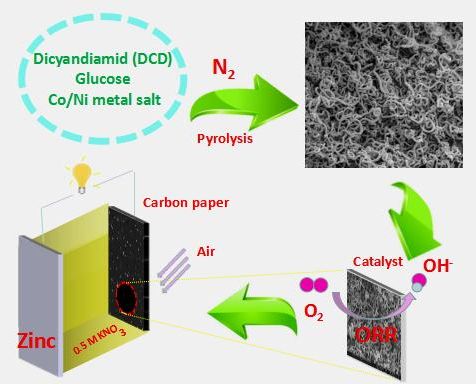UK sees longest continuous period without generating electricity from coal as temperatures soar.



Solid-state sodium-ion batteries are far safer than conventional lithium-ion batteries, which pose a risk of fire and explosions, but their performance has been too weak to offset the safety advantages. Researchers Friday reported developing an organic cathode that dramatically improves both stability and energy density.
The improved performance, reported in the journal Joule, is related to two key findings:

Physicists at the University of Zurich have developed an amazingly simple device that allows heat to flow temporarily from a cold to a warm object without an external power supply. Intriguingly, the process initially appears to contradict the fundamental laws of physics.
If you put a teapot of boiling water on the kitchen table, it will gradually cool down. However, its temperature is not expected to fall below that of the table. It is precisely this everyday experience that illustrates one of the fundamental laws of physics—the second law of thermodynamics—which states that the entropy of a closed natural system must increase over time. Or, more simply put: Heat can flow by itself only from a warmer to a colder object, and not the other way round.

Researchers from Drexel University and Trinity College in Ireland, have created ink for an inkjet printer from a highly conductive type of two-dimensional material called MXene. Recent findings, published in Nature Communications, suggest that the ink can be used to print flexible energy storage components, such as supercapacitors, in any size or shape.
Conductive inks have been around for nearly a decade and they represent a multi-hundred million-dollar market that is expected to grow rapidly into the next decade. It’s already being used to make the radiofrequency identification tags used in highway toll transponders, circuit boards in portable electronics and it lines car windows as embedded radio antennas and to aid defrosting. But for the technology to see broader use, conductive inks need to become more conductive and more easily applied to a range of surfaces.
Yury Gogotsi, Ph.D., Distinguished University and Bach professor in Drexel’s College of Engineering, Department of Materials Science and Engineering, who studies the applications of new materials in technology, suggests that the ink created in Drexel’s Nanomaterials Institute is a significant advancement on both of these fronts.

The optical laser has grown to a $10 billion global technology market since it was invented in 1960, and has led to Nobel prizes for Art Ashkin for developing optical tweezing and Gerard Mourou and Donna Strickland for work with pulsed lasers. Now a Rochester Institute of Technology researcher has teamed up with experts at the University of Rochester to create a different kind of laser—a laser for sound, using the optical tweezer technique invented by Ashkin.
In the newest issue of Nature Photonics, the researchers propose and demonstrate a phonon laser using an optically levitated nanoparticle. A phonon is a quantum of energy associated with a sound wave and optical tweezers test the limits of quantum effects in isolation and eliminates physical disturbances from the surrounding environment. The researchers studied the mechanical vibrations of the nanoparticle, which is levitated against gravity by the force of radiation at the focus of an optical laser beam.
“Measuring the position of the nanoparticle by detecting the light it scatters, and feeding that information back into the tweezer beam allows us to create a laser-like situation,” said Mishkat Bhattacharya, associate professor of physics at RIT and a theoretical quantum optics researcher. “The mechanical vibrations become intense and fall into perfect sync, just like the electromagnetic waves emerging from an optical laser.”

UCLA researchers and colleagues have designed a new device that creates electricity from falling snow. The first of its kind, this device is inexpensive, small, thin and flexible like a sheet of plastic.
“The device can work in remote areas because it provides its own power and does not need batteries,” said senior author Richard Kaner, who holds UCLA’s Dr. Myung Ki Hong Endowed Chair in Materials Innovation. “It’s a very clever device—a weather station that can tell you how much snow is falling, the direction the snow is falling, and the direction and speed of the wind.”
The researchers call it a snow-based triboelectric nanogenerator, or snow TENG. A triboelectric nanogenerator, which generates charge through static electricity, produces energy from the exchange of electrons.

Zack Geballe spent months screwing together pairs of polished diamonds at the Carnegie Institution for Science’s Geophysical Laboratory. Theory predicted that squeezed between the diamonds’ tips could be one of the most miraculous substances of modern physics—a material that, at near room temperature, could transport electricity without losing power. He just needed to get the samples to Argonne National Lab outside Chicago to heat them up with laser pulses.
When Argonne beam line scientist Yue Meng turned the lasers on, all four diamonds cracked in half.
“It was a total catastrophe,” Geballe told me while I was visiting him at the Geophysical Laboratory in Washington, DC, this year.

Two European theoretical physicists have shown that it may be possible to build a near-perfect, entangled quantum battery. In the future, such quantum batteries might power the tiniest of devices — or provide power storage that is much more efficient than state-of-the-art lithium-ion battery packs.
To understand the concept of quantum batteries, we need to start (unsurprisingly) at a very low level. Today, most devices and machines that you interact with are governed by the rules of classical mechanics (Newton’s laws, friction, and so on). Classical mechanics are very accurate for larger systems, but they fall apart as we begin to analyze microscopic (atomic and sub-atomic) systems — which led to a new set of laws and theories that describe quantum mechanics.
In recent years, as our ability to observe and manipulate quantum systems has grown — thanks to machines such as the Large Hadron Collider and scanning tunneling electron microscopes — physicists have started theorizing about devices and machines that use quantum mechanics, rather than classical. In theory, these devices could be much smaller, more efficient, or simply act in rather unsurprising ways. In this case, Robert Alicki of the University of Gdansk in Poland, and Mark Fannes of the University of Leuven in Belgium, have defined a battery that stores and releases energy using quantum mechanics.

In a paper to be published in the forthcoming issue in NANO, a team of researchers from the School of Chemistry and Chemical Engineering at Hunan University of Science and Technology have proposed a novel strategy for the synthesis of non-precious metal catalysts in zinc-air batteries that do not compromise its electroactivity, affordability and stability.
As a green and sustainable energy generator, zinc-air battery has attracted great attention from researchers due to its high specific energy, high current density, low cost, and environmental friendliness. Yet it is not without its drawbacks. The slow oxygen reduction reaction (ORR) of its cathode has become an obstacle to its commercial application. One possible solution is to use platinum (Pt) and Pt-based catalysts, but its high cost and scarce availability make it less ideal. In addition, alkaline KOH (or NaOH) is generally used as the electrolyte, but it leads to the generation of carbonates (CO32-) due to the dissolution of CO2 in the electrolyte as well as the spontaneous corrosion of the anodic zinc in strong alkaline media. This has the effect of slowing down the ionic conductivity of the electrolyte and battery life. Therefore, a neutral electrolyte should be used instead.
